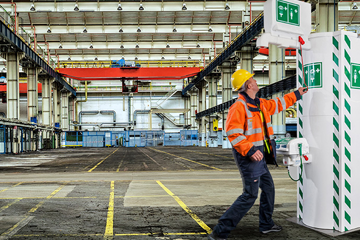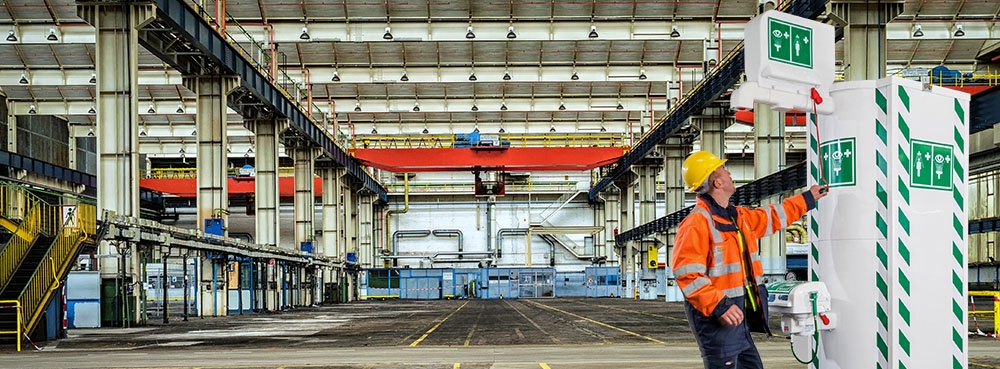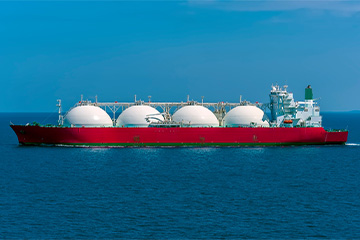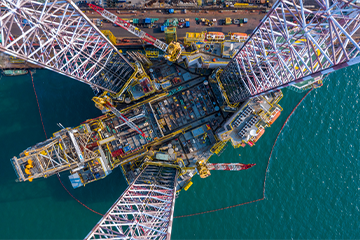Enquiry List () (0)
- 27 Feb 2025

Safety Showers vs Hygiene Showers

Safety Showers vs Hygiene Showers: Everything You Need to Know
When it comes to workplace safety, guidelines around hazardous substances and decontamination can often lack clarity.
Many regulations call for ‘hygiene facilities’ or ‘washing stations,’ but these broad terms can lead to a false sense of security. In reality, standard sinks and showers may not provide the rapid, thorough decontamination needed if there's a chemical spill or splash. Without the right emergency equipment, workers remain at risk of serious injury.
In workplaces where hazardous substances can cause severe irritation or harm to the skin or eyes, there’s no substitute for a professionally installed safety shower or eye/face wash station.
What is a Safety Shower and Eye Wash?
Discover the critical role of safety showers in workplace safety and how to effectively use them.
A safety shower (or chemical or emergency shower) provides immediate decontamination when hazardous substances come into contact with a person’s skin, clothing, or personal protective equipment (PPE). Once activated, it delivers a continuous flow of water to quickly rinse away contaminants, minimising the risk of serious injury.
While some safety showers include built-in eye wash stations, their high water pressure makes them unsuitable for flushing chemicals from the eyes.
An eye wash station is specifically designed for gentle, targeted decontamination, flushing dust, chemicals, or other irritants from the eyes. Its controlled flow rate ensures thorough rinsing while minimising further irritation or injury.
What are Safety Showers Used for?
Unlike regular showers, emergency safety showers aren’t for routine cleaning. They are vital, immediate response tools designed to mitigate severe injury in the event of an accidental chemical exposure.
The primary purpose of a safety shower is the rapid and thorough decontamination of an individual who has been exposed to hazardous chemicals or materials on their body or clothing. In a chemical splash or spill, these showers deliver a large volume of water quickly to:
- Dilute and wash away harmful substances: by flooding the affected area with water, the shower rapidly dilutes and removes corrosive, irritating or toxic chemicals from the skin and clothing.
- Minimise injury severity: immediate flushing can significantly reduce the severity of chemical burns, prevent skin irritation and limit the absorption of toxic substances into the body.
- Halt chemical reactions: for reactive chemicals, a constant flow of water can help to cool and neutralise the substance on the skin, preventing further damage.
Essentially, a safety shower is a first-aid measure, providing time for an injured person to receive medical attention without further harm.
When are Safety Showers Required?
Understanding when a safety shower is required is as important as knowing how to use one. A thorough workplace hazard assessment and regulatory compliance will determine when they are required. You will typically find safety in environments where there is a risk of:
- Chemical splashes: any workplace where corrosive, irritating or toxic chemicals are stored, handled or used in quantities that could lead to splashes onto an individual’s body.
- Extensive skin contact: if there’s a possibility of large areas of the body or clothing becoming contaminated.
- Hazardous operations: they are necessary wherever employees work with materials that can cause injury through skin contact. This often includes laboratories, chemical manufacturing plants, battery charging areas, industrial cleaning operations and other facilities dealing with acids, alkalis, solvents or other hazardous liquids.
Key Requirements of a Safety Shower
- Flow Rate: Minimum 76 litres per minute (20 US gallons per minute)
- Flush Duration: Must operate for at least 15 minutes
- Water Temperature: Tepid (between 16-38°C / 60-100°F) throughout use
- Water Quality: Must use potable (clean and safe) water
- Location: Must be accessible within 10 seconds of a potential hazard
- Activation: Valve must go from ‘off’ to ‘on’ in one second or less, and remain open without use of the operator’s hands until intentionally closed
Key Requirements of an Eye Wash
- Flow Rate: Minimum 11.4 litres per minute (3 US gallons per minute)
- Flush Duration: Must operate for at least 15 minutes
- Water Temperature: Tepid (between 16-38°C / 60-100°F) throughout use
- Water Quality: Must use potable (clean and safe) water
- Location: Must be accessible within 10 seconds of a potential hazard
- Activation: Hands-free operation once activated
- Nozzle Placement: Must provide proper eye irrigation and help keep eyelids open for effective flushing
Safety Showers vs Hygiene Showers: What’s the Difference?
While both involve washing, safety showers and hygiene showers serve completely different purposes in the workplace.
- Hygiene showers are for routine washing and commonly found in staff changing rooms.
- Safety showers provide emergency decontamination, rapidly flushing hazardous substances from skin, clothing, and PPE to prevent injury.
Key Differences
|
Feature |
Hygiene Showers |
Safety Showers |
|
Purpose |
Routine washing |
Emergency decontamination |
|
Flow Rate |
8–15 L/min, adjustable temperature |
76 L/min (20 US gallons/min) for at least 15 minutes |
|
Spray Pattern |
Standard showerhead spray |
Full-body coverage, meeting EU and international standards (50.8 cm diameter at 152.4 cm height) |
|
Activation |
Manual operation, user-controlled |
Activates in 1 second or less, hands-free, stays on until manually turned off |
|
Water Temperature |
Adjustable for comfort |
Tepid (16–38°C / 60–100°F) to prevent scalding, chemical absorption, or hypothermia |
|
Location |
Installed in toilets and changing areas |
Must be within 10 seconds of hazardous areas |
|
Regulations |
No strict compliance requirements |
Mandatory under ANSI Z358.1-2014 & EN 15154 |
|
Additional Features |
None |
Alarms (visual/audible) for quick response and Combination units for simultaneous eye/body flushing |
Summary
Safety showers are a legal requirement in workplaces handling hazardous substances, providing rapid decontamination in emergencies. Unlike hygiene showers, they are designed to minimise injury risks and ensure regulatory compliance.
Explore our range of indoor and outdoor safety showers, and eye washes. Or contact us today for quote.












